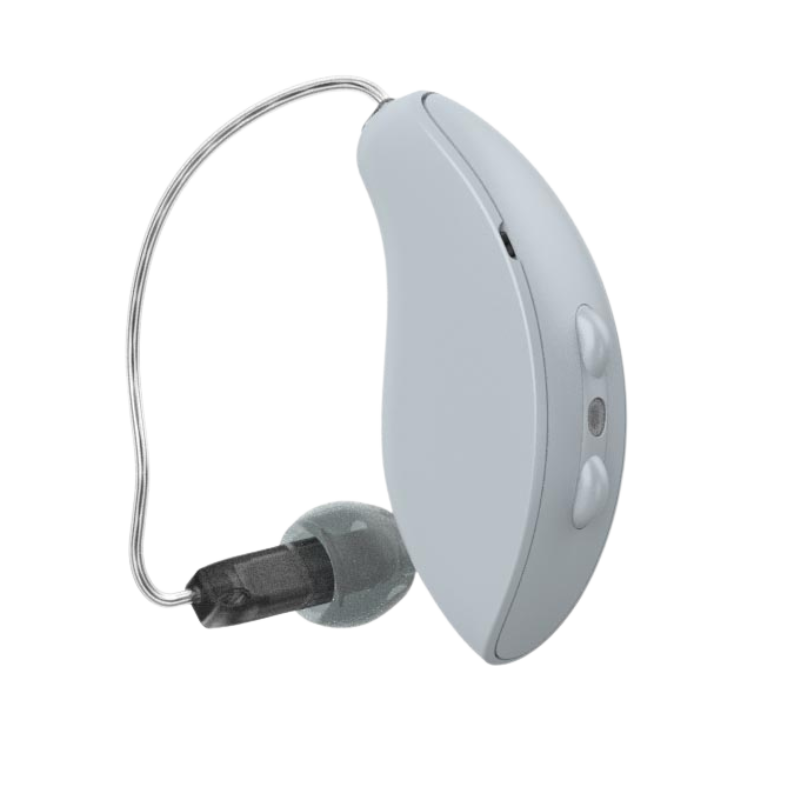Rechargeability
In a world where almost everything has become rechargeable, hearing aids are no exception. While battery-operated models are still available, rechargeable hearing aids are becoming the norm for new hearing aid models. Many manufacturers are releasing rechargeable-only lines of hearing aids and only adding battery-operated options later on.
Read MoreHearing Aid Rechargeability
Rechargeable hearing aids have become a game changer in terms of ease of use. Hearing aid users no longer need to tote around batteries with them wherever they go in case their hearing aids die during the day. You only need to remember to charge them overnight, which is very easy because when you take them off you can just put them in the charger on your nightstand instead of a case. Many chargers have lids as well, which helps protect the hearing aids from curious kids and pets as well as from environmental moisture. Some chargers even have a space for a desiccant pod to allow for passive moisture removal as the hearing aids charge, and others have active drying technology and UV-C sanitizing built in.
Even though rechargeable models often come at a higher price point than battery-operated ones, at the end of the day they end up saving you money. Think about how many packs of batteries you need to buy per year! It can add up quickly. They are also easier on the environment, as there are far fewer disposable batteries ending up in landfills (not to mention that to properly dispose of hearing aid batteries, you really should be taking them to a battery recycling center, not throwing them in the trash due to their chemical contents).
Rechargeability is also ideal for the many hearing aid users who have limited mobility. Hearing aid batteries are tiny, and trying to open the battery door, fish out the old battery, peel the tiny sticker off the new battery, and fit the new battery back into the tiny battery door is not easy if you have arthritis, neuropathy, or vision problems. In contrast, rechargeable hearing aids only need to be dropped into their slots in the charger, which is much easier. In terms of battery life, most prescription hearing aids can last up to 30 hours on a single charge, so you never have to worry about them dying before the day is done. If you forget to charge them one night, you may be able to get through part of the next day as well before they need to be charged. The charging time is fast, too– they can go from completely dead to fully charged in about 3 hours. If you forget to charge them overnight, a quick 30 minute charge will get you a few more hours of battery life.
Of course, disposable batteries are still around for a reason, as rechargeable hearing aids do have some drawbacks. Very small in-the-ear hearing aids still require disposable batteries for the most part due to the larger size required for rechargeability. In addition, rechargeable hearing aids are often a bit larger than their battery-operated counterparts. Depending on the brand, a telecoil may not be available in rechargeable models (looking at you, Widex). If you do a lot of Bluetooth streaming or use CROS transmission, your battery life will be significantly reduced and your hearing aids may not always make it through a full day. The same goes for ultra-power BTE models, most of which still require disposable batteries due to the high power demand to provide the appropriate output. In general, rechargeable hearing aids often have higher rates of malfunction and need to be sent in for repair more often than battery operated hearing aids.
Overall, rechargeable hearing aids are here to stay, and as technology advances they are likely to become even more sophisticated. Talk to your hearing care provider to find which hearing aid will work the best for you based on your wants, needs, and values.
Rechargeability
Hearing Aids

Eargo 7

Jabra Enhance Plus

Lexie B2 Plus

Nuance Audio
Oticon Intent
Oticon More

Oticon Real
Oticon Zeal

Phonak Lumity
.png)
Phonak Sphere Infinio

ReSound Omnia

ReSound Vivia

Resound Nexia
.png)
Sony CRE-E10

Soundwave Sontro

Starkey Edge AI

Starkey Evolv Ai

Starkey Genesis AI

Starkey Omega AI

Widex Allure
.png)

